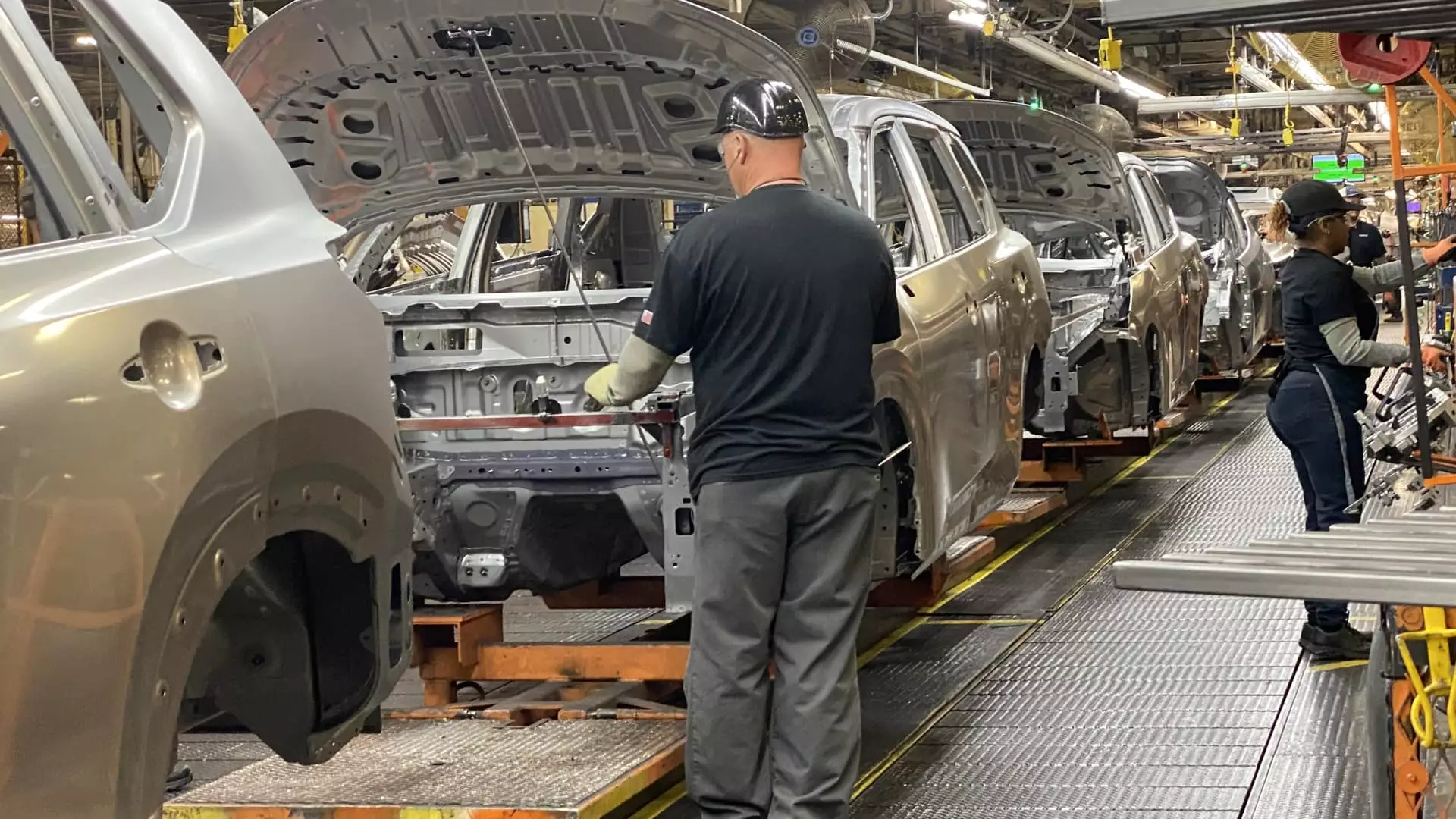As President Donald Trump’s controversial tariffs on imported vehicles persist, the consequences are shaping up to be far-reaching and potentially devastating for the automotive industry. Analysts are sounding alarms over the long-term damage these policies could inflict not only on automakers but also on consumers. The initial anticipation of significant revenue loss — estimated in the hundreds of billions — raises serious questions about the sustainability of these tariffs and their impact on America’s economic landscape. We must calmly but critically examine this scenario, as it threatens to unleash a cascade of adverse effects on multiple stakeholders.
In a shocking revelation, it is projected that the automotive industry could face cost increases of over $160 billion annually due to the 25% duties. This staggering figure poses a serious threat to the financial viability of American auto manufacturers, particularly the iconic automakers based in Detroit. If these companies struggle to weather the storm, we could witness production limitations, reduced workforce morale, and even plant closures as a worst-case scenario. Such outcomes would mark a drastic detachment from the resilient Midwestern manufacturing ethos that built America’s automotive legacy.
The Ripple Effect on Consumers
When tariffs are implemented, it’s usually the consumers who feel the pinch first. With higher production costs looming on the horizon, analysts like Mark Delaney from Goldman Sachs estimate that consumers can expect to see new vehicle prices escalate by an average of $2,000 to $4,000. The implications of this price surge are dire; they not only erode consumer purchasing power but also dampen the already fragile demand for new vehicles. Given that the average new car price hovers around $50,000, a substantial price hike could push many would-be buyers out of the market, causing a further decline in sales figures.
The reality for most working Americans is that affordability has remained a persistent issue in the automotive sector—a facet that has been only exacerbated by the impending influx of tariffs. Given the elevated auto loan interest rates, which now exceed 9%, potential buyers may find the dream of owning a new vehicle slipping further away. This situation starkly contradicts the administration’s ostensibly noble intent of protecting American manufacturing, ultimately creating a paradox where the very policies meant to boost domestic production could deter consumers from purchasing American-made products.
Shift in Market Dynamics
As traditional giants like Ford and General Motors grapple with these challenges, the market dynamics are shifting in troubling ways. Smaller manufacturers and foreign automakers are also scrambling to adapt, some opting to cease U.S. shipments altogether. Companies such as Jaguar Land Rover, and even Hyundai, have had to rethink their American strategies amidst these economic uncertainties. The escalating price of goods, combined with a dwindling supply of vehicles not affected by tariffs, threatens to unleash an unprecedented scarcity in the market.
This structural adjustment isn’t merely a consequence of economic policy; it symbolizes a pivotal moment that invites serious reflection on the efficacy of protectionist measures. The automotive industry, which thrives on global interconnectedness, faces a defining challenge: adapt and innovate amid an environment riddled with uncertainty or risk becoming a relic of a bygone era.
The Broader Economic Impact
The question that looms large is not just about vehicles; it’s about the implications for the broader economy. With analysts forecasting a reduction of upward of 2 million fewer vehicles sold annually in the U.S. and Canada, it is critical to evaluate how this downturn could ripple through the economy. The consumer’s reduced purchasing power will likely extend beyond the automotive sphere, leading to decreased spending in retail and various ancillary sectors that rely on automotive sales.
Moreover, as Sam Abuelsamid from Telemetry aptly put it, the rising costs of vehicles will limit people’s spending power, creating a cascading effect on other industries that rely on consumer income. The impact of decreased vehicle sales will reach far into the heart of America’s economic framework—reducing the cash flow for dealerships, diminishing sales tax revenues for local governments, and impacting jobs within the sales and service sectors. Like a house of cards, the consequence of these tariffs could lead to a much larger financial collapse.
In a world where economic protectionism often stifles innovation, the current trajectory suggests that America’s automotive sector might be headed for a stormy future characterized by uncertainty, volatility, and potential regression. A reevaluation of these policies may be critical to avert harm not only to the automotive industry but also to the American consumer who deserves better.


Leave a Reply